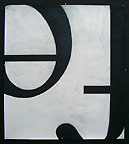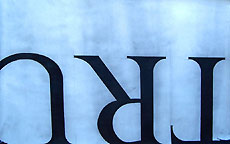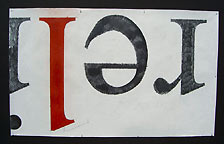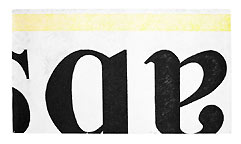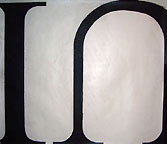|
|
||
| Home I Art Call I Current Exhibit I Archives I Featured Artists I About Us I Contact | ||
|
Scott Henstrand BA(Art), MA(Ed) Brief bio:
Scott Henstrand was born on
In the recession of the early Ď90s, Scott
turned to teaching and received a MS in Education in 1998 from His current works are a direct result of his work with students. In observing their struggle for identity and understanding of symbol system manipulation, since 2000 Scott has been exploring his own uneasy relationship to language and self. Artistís statement: My work uses text in an attempt to glimpse the boundaries of text and experience. The drawings render actual (or perceived) morphemes or partial phrases. These language units are isolated and offered in a way that separates the viewer from the signified, such as reversed, mirrored, flipped. The separation is never complete, though. We are driven to create meaning. In creating language, we define and form boundaries around our perceived experience. This human drive constantly expands our comfort by defining experience in symbol systems, containing as much as possible in its umbrella of Unity and in this, contain experience in the boundaries of language. My intent is to give the viewer language in its partial form, at the inchoate place where our given meaning to the drawn symbol falls between representing an abstract concept or a concrete object, where the ground can be as meaningful as object. The question is whether we can experience our environment-our Place-outside of language and symbol systems. Place is what is directly in sensory experience, what immediately surrounds. Place is not what we ultimately experience. Flooded in language, language as all, of the simulation, we live a virtual existence, determined to be fundamental rather than a fabrication of our social structure and which bypasses the physicalness of existence for our abstracted nature.
|
|
|
